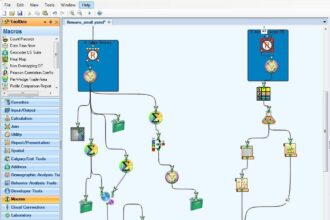When your company is evaluating new cloud-based software solutions, it’s important to bring the right people to the table to drive the discussion. From executive buy-in for top-down support to IT expertise and end user input, the groups needed to make enterprise software decisions can be complex. A little strategic planning and the right collaboration tools will ensure that your company invests in products that get the job done and seamlessly integrate into your workflow. Here’s a closer look at who you need to bring to the table and smart ways to keep the whole team on track.
When your company is evaluating new cloud-based software solutions, it’s important to bring the right people to the table to drive the discussion. From executive buy-in for top-down support to IT expertise and end user input, the groups needed to make enterprise software decisions can be complex. A little strategic planning and the right collaboration tools will ensure that your company invests in products that get the job done and seamlessly integrate into your workflow. Here’s a closer look at who you need to bring to the table and smart ways to keep the whole team on track.
Necessary Team Members
 IT management and line support: Any cloud based applications should be selected with the support of your IT team. They’ll be responsible for managing privately hosted solutions or interfacing with external vendors, supporting end users, and configuring and migrating data. Ensuring that any cloud based solution you’re considering integrates with the rest of your IT environment is critical. It’s also helpful for data architecture, device compatibility, and other reasons to have the right reps from your IT department at the table.
IT management and line support: Any cloud based applications should be selected with the support of your IT team. They’ll be responsible for managing privately hosted solutions or interfacing with external vendors, supporting end users, and configuring and migrating data. Ensuring that any cloud based solution you’re considering integrates with the rest of your IT environment is critical. It’s also helpful for data architecture, device compatibility, and other reasons to have the right reps from your IT department at the table.
Executive management, especially finance: Major software initiatives need executive support – from allocating the necessary budget and human resources to ensuring that organization-wide adoption happens successfully. Executive participation can help keep your project a priority and focus on the impact that it will have on the bottom line. This also enables you to educate your executive team on the benefits of cloud applications and their potential for increasing mobility, engagement, and productivity. Limit executive participation to high impact sessions, to keep them up to date on the overall status without allowing them to become mired in details.
End users: Experienced business analysts will be overseeing the process of documenting the business processes and mapping them to the new software system. Business analysts can’t fully represent the end user. Their expertise is in asking the right questions, evaluating software, and ultimately making recommendations regarding selection and configuration. But it’s vital to get end users’ feedback on crucial features and their buy-in on the software process. If ownership for software selection and implementation has included end users from the beginning, the transition to new software will be much smoother.
Improving Team Relations
Successfully managing an interdisciplinary team on a complex project can be a challenge. Different team members are operating at a variety of levels of technical understanding. Here are three things you can do to streamline the process.
Bring everyone up to speed on the cloud: Don’t assume that everyone in the group understands what the cloud is, or what it’s important. Put together some background materials – keep them short, focused on what’s relevant, and not overly technical. Give team members the chance to review materials in advance, and have an expert field questions privately or during your launch meeting.
Be clear on software features and functionality: Fully document your software functionality. Be clear on the differences between the cloud and desktop versions if you’re looking at converting an existing system. Consider having a software rep come in to demo the software for the broader team, and give your colleagues a chance to ask questions of an external resource.
Use collaboration technology: Collaboration tools will help you get the most out of your team, from conference bridges to video conferencing and webinars. There’s nothing more annoying than having to travel for meetings that can be conducted virtually. Simplify and streamline your collaboration process as much as possible using computer conferencing and other technologies.
Have you run interdisciplinary teams to evaluate different software options? What suggestions and techniques have you used to include the right people and keep everyone on track? Let us know in the comments below.
(image: cloud solutions / shutterstock)







